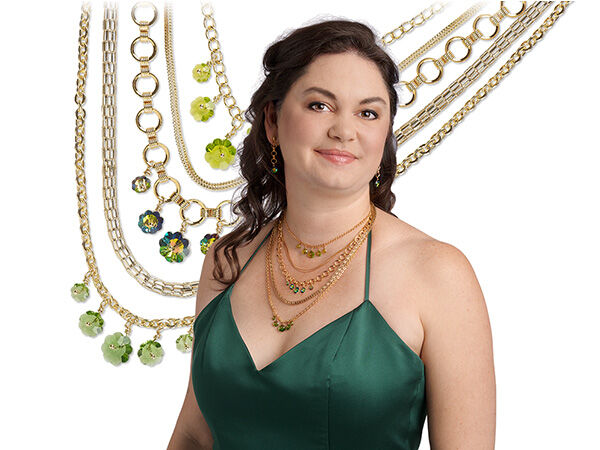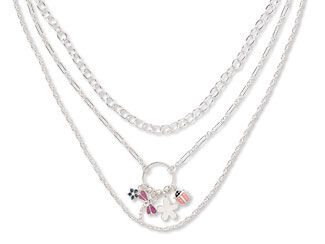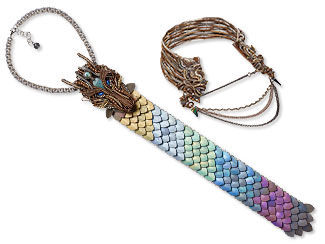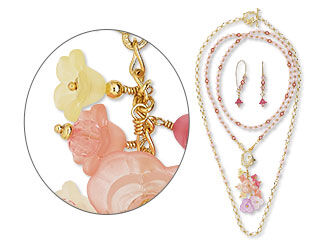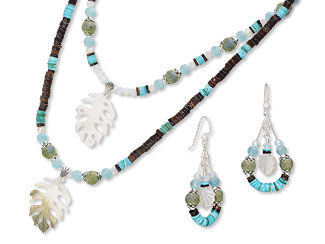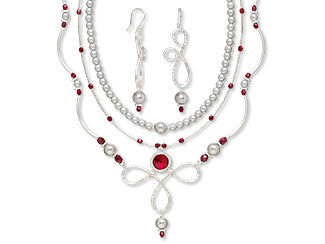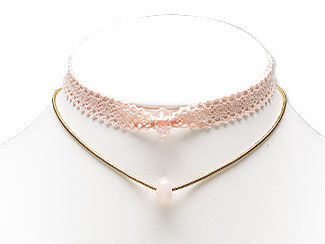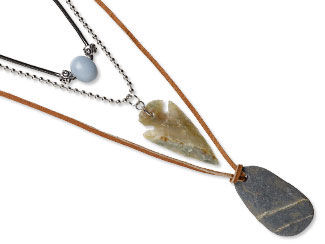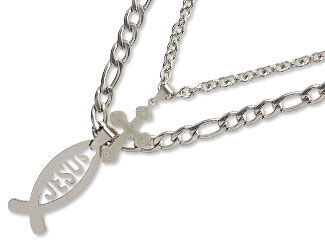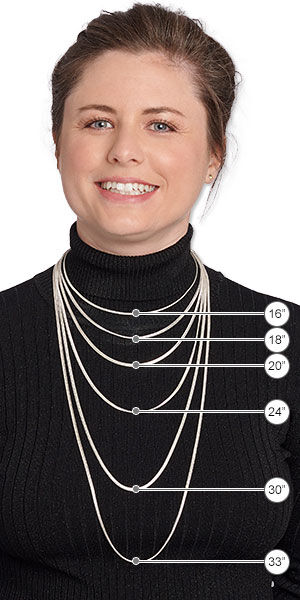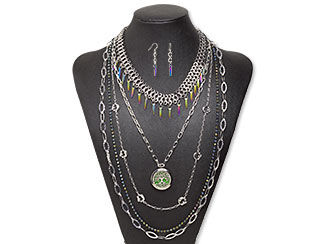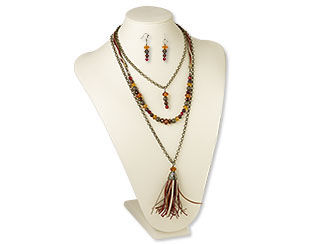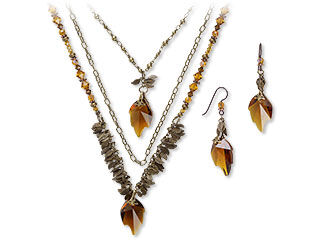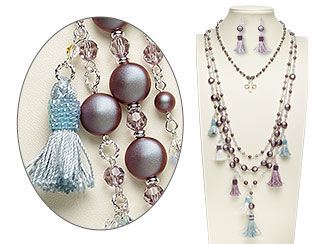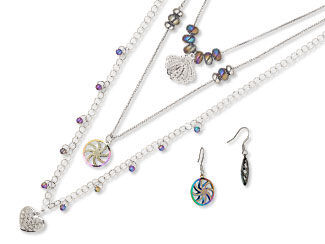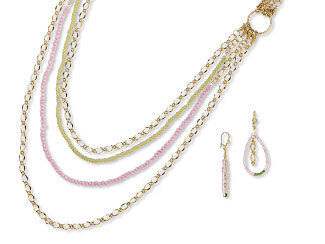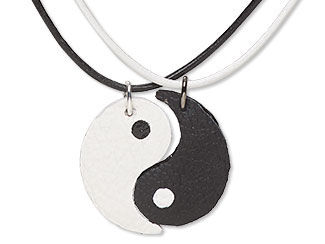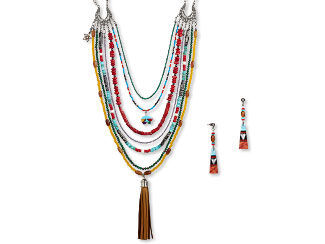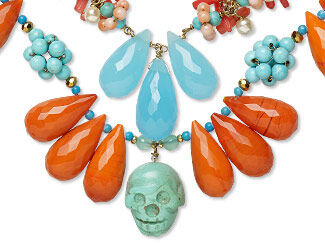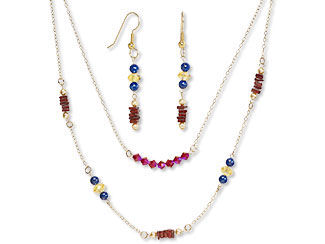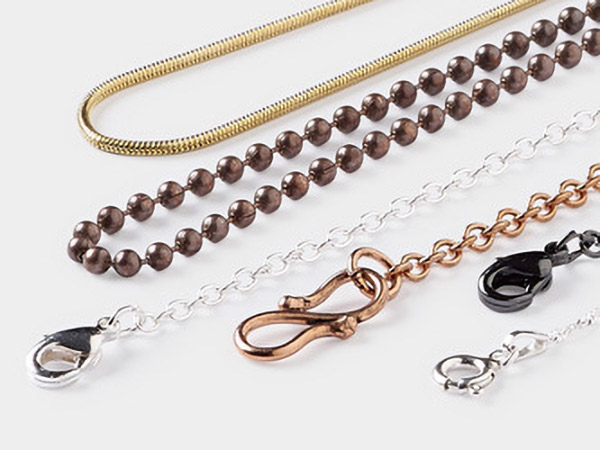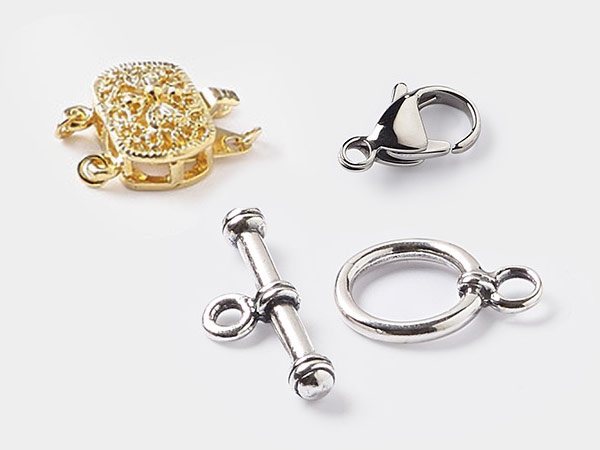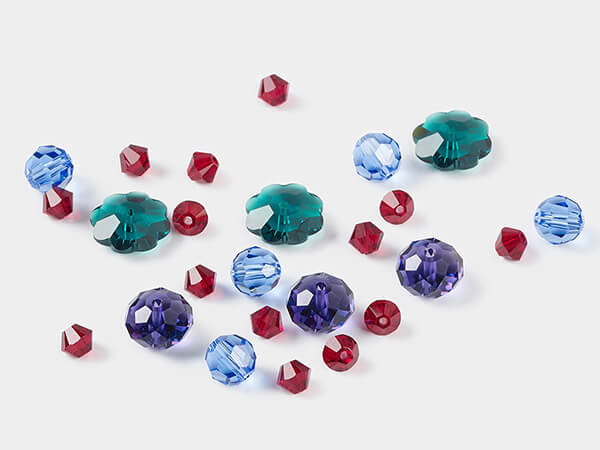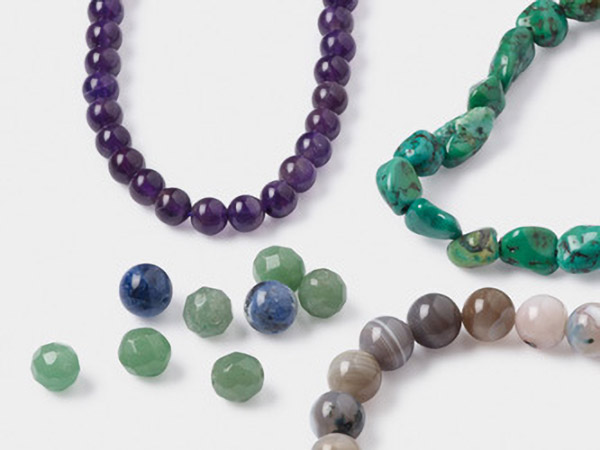5 Tips for Creating a Layered Look with Chain
Minimalism and maximalism have been playing tug-of-war in the human sense of beauty for millennia. One of the popular on-going jewelry trends is layered necklaces, either as individual lengths that can be swapped on and off for personalized taste—or as pre-fabricated sets on multi-strand clasps for an easy put-together look that lets jewelry fans get going faster.
Whether your brand aesthetic is Less is more or Less is a bore, this long-lasting style is one your customers can express with your designs. Here’s some ideas for creating layered combinations and things to keep in mind while making decisions about your brand aesthetic.
What is Necklace Layering?
Creating an ideal layered necklace combination can be challenging, for both artisans and retail customers alike. How many necklaces does it take to achieve a harmonious appearance? What lengths are ideal for layering? Which necklace styles complement each other best for a stylish stack? How many necklaces should a stack contain? What kinds of mix-and-match work well together? What’s not enough or too much?
Draw inspiration from high fashion houses by examining the work of acclaimed designers like Alexander Wang, Isabel Marant and Valentino. While their necklace designs vary significantly in appearance, a consistent theme emerges: a commitment to personalization. Designers and fashion lovers alike can choose from a variety of charms, drops and pendants to personalize the look.
One element to keep in mind is clothing necklines. Layered necklaces can provide the focal to an outfit, so jewelry that disappears beneath clothing or gets lost in ruffles undermines the visual impact. Optimal choices for this trend include high collars or plunging necklines, as these options ensure necklaces drape gracefully either on a backdrop of fabric or against the skin—although that doesn't exclude experimenting with scoop, bateau or other necklines.
Here are some common necklace styles that get stacked on the catwalks, runways and red carpets:
- Minimalist chain or narrow cord with affirmation charms
- Petite gemstone links
- Ribbon chokers
- Body chains and long bikini necklaces
- Gemstone strands from the collar necklace to the pearl rope
- Rigid neckwires
One consideration is how many necklaces to stack in a look. A common design maxim is “keep it odd.” An odd number keeps the look balanced and interesting without being too symmetrical. The stack can be as limitless as Mr. T’s signature style, though many fashionistas prefer 3, 5 or 7 for a put-together outfit.
The answers to these questions are a matter of personal style and brand aesthetic. No answer is “wrong,” just “wrong for you.” And that applies whether you’re the jewelry designer, the jewelry wearer—or both!
1. Play with Style
Different types of necklaces tell different style stories. And those style stories are an intentional decision.
For example: punk, hip-hop, steampunk and Victorian-esque necklace designs all feature chain as a core element. Yet the style of chain makes a difference in supporting the aesthetic or conflicting with it: ball chain is often used to hold dog tags and is great for military-inspired designs, curb and French rope chain create an instant callback to 1980s hip-hop styles, while paperclip chain is the star of 21st century jewelry luxury minimalism.
The same applies to other style elements and colors. Black velveteen ribbon or cord with richly red-colored beads and antiqued silver finishes practically breathe “romantic gothic,” while gleaming stainless steel with precisely enameled teal-and-orange geometric shapes flat-out state “mid-century modern.” The brand message conveyed by three necklaces that subtly reference each other is very different from the message conveyed by seven necklaces of vastly different materials worn in an artful tangle. The first is classic and formal, the second is casual and boho.
What’s your brand saying?
2. Play with Length
Designers and fashionistas can choose necklace lengths that vary, or opt for equal lengths that create a subtle jingle with every move. The key to successful necklace layering is to make it look effortless, so the most common suggestion is to steer clear of uniform spacing between each necklace.
For example: rather than using 16-, 18-, and 20-inch necklaces together, opt for 16-, 20- and 30-inch necklaces. Instead of 14-, 16- and 18-inch necklaces, layer a neckwire with a mid-length chain and a beaded rope.
To gauge where necklaces typically fall on the average adult woman, refer to this visual infographic. Additionally, it can help designers choose which lengths to experiment and design with. Be sure to consider how pendants, charms, drops and other suspended additions can affect the drape of a strand, chain or length of cording. One helpful technique is laying the necklaces out together on a multi-strand bead board, to find the right combination of lengths and embellishments.
How long do you want to go?
3. Play with Visual (and Physical) Weight
Bead strands, rigid neckwires, cording and chains all come in a wide range of widths—some dainty and delicate, some big and bold. The thicker the necklace, the heavier it is—both physically and visually. To avoid bogging the wearer down, it's important to use varying thicknesses when layering necklaces, by placing large or wide strands next to those of equal or lesser size and avoid placing many thin lengths together.
For example: rather than layering three 0.8mm Gossamer™ chains over each other, mix them up with a strand of 2mm crystal bicones and a necklace using tiny gemstone tube beads for the latest “barely there” trends. Or choose vivid and robust options, like Ralph Lauren’s designs, using visually large (but still lightweight) acrylic chains with braided bola cord and large, hollow metal pendants.
Part of what adds variety to layered necklace styles is the addition of dangles. Whether it’s a fine snake chain with a tiny crescent moon or a kumihimo cord with a massive magnesite go-go, the look changes when the designer slides on a pendant, focal, drop or charm. The drape of the necklace changes and the space it takes up is longer, meaning other layers need to fit in different ways.
Here are some on-trend elements added to necklaces:
- Names or words cut from acrylic
- Lockets
- Open circles and other geometric shapes
- Geodes, raw-cut crystals and gems
- Coin settings and coin replicas
- Tassels
- Curved tube beads
- Arrow, chevron and spike shapes
- Talismans or cultural symbols
Finally, don’t forget about the impact of textures! A smooth line has less visual heft in a design than a textured option in the same size. Facets, carvings, corrugation, stardust, hammered—they’ll all add visual weight to layered designs. Keep the goal aesthetic in mind and select necklace styles to evoke it.
What’s your sense of design balance?
4. Play with Sets - Separate or Connected
Jewelry makers have some control over how layered necklaces from their design lines go together. Here are three suggested methods:
- All necklaces are designed to work with all other necklaces from the collection
- Necklaces are marketed as sets, displayed together or sold together
- Necklaces are actually multi-strand designs, connected by findings or a clasp.
Option 1 can take more of a designer’s time and creative energy, but result in a small, cohesive collection. Option 2 or 3 can reduce the effort and guesswork for customers who want to flaunt the layered look. Option 3 can make it more difficult for a jewelry lover to incorporate pieces from their current jewelry box into the look, but keeps clasps and connectors out of sight and decreases the chance of tangling.
Each method offers a way to tailor jewelry designs to the wearer while maintaining a consistent brand aesthetic. Designers often start with the measurements of the longest layer and work towards the shortest to fill in the blanks, but it’s not the only way to work. Others begin with the focus of the layered set and design around it.
How much aesthetic control do you want?
5. Play with Color
Gold- and silver-colored finishes keep things classic and luxurious, but there’s a universe of color out there. Mixing metals is a given these days; mixing plated chain with velvet ribbon and acrylic beads? Not so much.
Here are some color play ideas to get started with:
- Play with gritty gunmetal or brighten up designs with painted chain.
- Weave ribbon through large curb chain links.
- Create fingerloop or kumihimo braids with added beads or charms for pops of personality.
- Increase the luxury by adding in strands of pearls, cupchain or gemstone beads.
- Aim for casual style with silk or hemp micro-macramé or by adding custom-made tassels .
- And more!
How much fun do you want to have?
Frequently Asked Questions About Necklace Layering
Q: How do you layer necklaces with them tangling together?
A: Depends on your style! Some designers want a casual boho look that slightly tangles necklaces together, which can be achieved by simply wearing necklaces of similar lengths together. If your brand or style means they should be kept apart, consider larger differences in length or attaching to a slide lock or similar multi-strand clasp.
Q: What length of necklace should I layer?
A: Any of them—it’s the space between the lengths that matters, so steer clear of uniform spacing between each necklace. Rather than using 16-, 18-, and 20-inch necklaces together, opt for 16-, 20- and 30-inch necklaces. Instead of 14-, 16- and 18-inch necklaces, layer a neckwire with a mid-length chain and a beaded rope.
Q: Can you mix gold and silver when wearing numerous necklaces for the layered look?
A: Absolutely! Mixing metals is a given these days. And don’t limit yourself to just gold and silver—there’s gunmetal, rose gold, copper, stainless steel and other materials.
Q: What is the number of necklaces I should wear for this look?
A: A common design maxim is “keep it odd.” An odd number keeps the look balanced and interesting without being too symmetrical, so many fashionistas prefer 3, 5 or 7 for a put-together outfit.
Q: Can I mix chain and strung necklaces for the layered necklace look?
A: Yes, yes, yes! Layering necklaces doesn’t mean “just chain.” Bead strands, rigid neckwires, cording and chains can all interact stylishly in the layered look.
There you have it—the nuances of layering necklaces. This look is for anyone, so get out there and start linking your designs to this versatile trend. Provide customers with confident recommendations for grouping up your creations or showcase personal style by stepping out in favorite necklace stacks.
Shop for Your Materials Here:
Have a question regarding this project? Email Customer Service.
Copyright Permissions
All works of authorship (articles, videos, tutorials and other creative works) are from the Fire Mountain Gems and Beads® Collection, and permission to copy is granted for non-commercial educational purposes only. All other reproduction requires written permission. For more information, please email copyrightpermission@firemtn.com.
